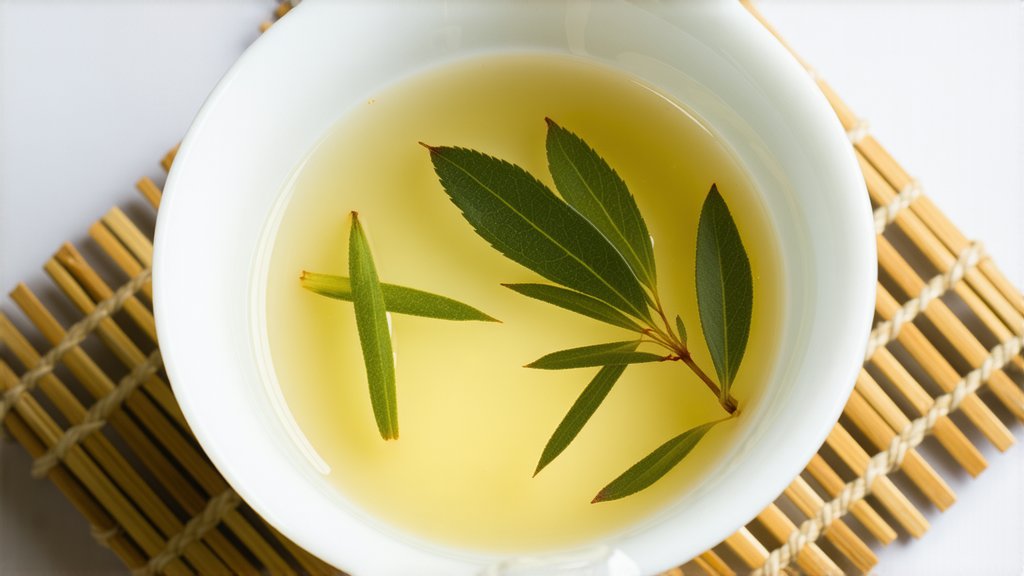
White tea, known for its minimal processing and subtle flavors, holds a special place in the world of tea. Among the various types of white tea, Bai Mu Dan, also known as White Peony, stands out as a symbol of elegance and refinement. In this article, we will delve into the history, varieties, production process, brewing methods, and tasting techniques of Bai Mu Dan, offering international readers a comprehensive understanding of this exquisite tea.
History of Bai Mu Dan
Bai Mu Dan has a long and rich history that dates back to the early days of Chinese tea culture. It originated in Fujian Province, China, which is renowned for its favorable climate and ideal conditions for tea cultivation. The name "Bai Mu Dan" translates to "White Peony," reflecting the tea's beautiful appearance and delicate nature.
Legend has it that Bai Mu Dan was first discovered by a local tea farmer who noticed a wild tea plant with unusually large leaves. Intrigued by its unique characteristics, he decided to cultivate and process it. Over time, this tea gained popularity among the local people and eventually spread throughout China and beyond.
Varieties of Bai Mu Dan
Bai Mu Dan is primarily grown in the Fuding region of Fujian Province, where the unique terroir contributes to its distinct flavor profile. There are several different varieties of Bai Mu Dan, each with its own unique characteristics.
One of the most well-known varieties is the Da Bai, which features larger leaves and a more robust flavor. Another variety is the Xiao Bai, which has smaller leaves and a lighter, more delicate taste. These two varieties represent the diversity within Bai Mu Dan and offer tea enthusiasts a range of options to explore.
Production Process of Bai Mu Dan
The production process of Bai Mu Dan is relatively simple compared to other types of tea, as it involves minimal processing to preserve the natural qualities of the leaves. Here is a step-by-step overview of the production process:
- Plucking: The tea buds and young leaves are carefully hand-picked from the tea plants. The timing of plucking is crucial to ensure the optimal flavor and quality of the tea.
- Withering: The freshly plucked leaves are spread out in a well-ventilated area to wither naturally. This process allows the leaves to lose some of their moisture content and become more pliable.
- Fixation: The withered leaves are then gently heated to fix their shape and stop the oxidation process. This is usually done using a low temperature to preserve the delicate flavors and aromas.
- Drying: After fixation, the leaves are further dried to reduce their moisture content. This can be done using either sun drying or machine drying, depending on the weather conditions and the desired flavor profile.
- Sorting and Grading: Once the leaves are dried, they are sorted and graded based on their size, shape, and quality. Only the finest leaves make their way into the final product.
Brewing Methods for Bai Mu Dan
To fully appreciate the beauty and flavor of Bai Mu Dan, it is important to brew it correctly. Here are some recommended brewing methods:
- Water Temperature: Use water that is around 175-185°F (80-85°C). Water that is too hot can damage the delicate leaves and result in a bitter taste.
- Tea-to-Water Ratio: For a single serving, use approximately 3-5 grams of Bai Mu Dan for every 150-200 ml of water. Adjust the amount according to your personal preference.
- Steeping Time: Steep the tea for about 3-5 minutes. Avoid over-steeping, as this can cause the tea to become too strong and bitter.
- Multiple Infusions: Bai Mu Dan can be infused multiple times, with each infusion revealing different layers of flavor and aroma. Simply add more hot water to the leaves and enjoy the gradual unfolding of the tea's complexity.
Tasting Techniques for Bai Mu Dan
Tasting Bai Mu Dan is an art that requires attention to detail and a keen sense of perception. Here are some tips to help you fully appreciate the nuances of this exquisite tea:
- Appearance: Observe the appearance of the dry leaves and the infused tea. Bai Mu Dan typically has silvery-white downy hairs on the surface of the leaves, giving it a distinctive appearance.
- Aroma: Smell the aroma of the dry leaves and the brewed tea. Bai Mu Dan often has a fresh, floral fragrance with hints of melon and honey.
- Flavor: Take small sips and let the tea coat your palate. Notice the subtle flavors and the smooth, silky texture. Bai Mu Dan is known for its light, refreshing taste with a slight sweetness.
- Aftertaste: Pay attention to the aftertaste, which should be clean and lingering. A good quality Bai Mu Dan will leave a pleasant, cooling sensation in your mouth.
In conclusion, Bai Mu Dan is a remarkable variety of white tea that offers a unique sensory experience. Its history, varieties, production process, brewing methods, and tasting techniques all contribute to its allure. Whether you are a seasoned tea connoisseur or a curious beginner, exploring the world of Bai Mu Dan is sure to be a delightful journey. So, sit back, relax, and savor the elegance of this exquisite tea.